10 steps to plan the perfect trip.
- Annie Mason
- Aug 15, 2023
- 19 min read
Updated: Sep 20, 2024
Travel Planning is everything you do from the minute you first start thinking about a trip, right up until you walk out the door. It is for me actually the first part of the trip and a bit that I love. From the time I start researching, talking to people and trawling the internet, the learning and “experience” of the trip has already begun. Initially it can go on inside your head, but there does come a time when you need to write it all down.
In this planning phase you have to answer some important questions like:
· What are your travel priorities- what are your 'must sees', passions and interests
· How you are planning to travel- cruise, road trips, house-sits, luxury or budget, volunteer, retreats, homestays, house swaps, casual work
· How much time do you have- long trips or short loops.
· What budget do you have- per trip or per year?
I have found that it works for me to move through what I call my 10 planning steps.
1. Deciding what it is you want to see and do
2. Doing your homework to set your personal travel goals
3. Making some Itineraries
4. Deciding how to travel
5. Deciding on a time frame
6. Set up a Travel Template
7. Making a budget
8. Arranging things before you go- what to book in advance
9. Packing
10. The final checklist
Let’s work through these….
STEP ONE: Deciding what it is you want to see and do
This sounds like the easy bit, but sometimes the hardest thing is working out where to start! The world is vast and sometimes overwhelming and there are a million blogs, websites and companies telling you what there is to see and do. But travel is PERSONAL ,you have to work out what YOU want to do with your hard earned money. Travel is its most powerful when it "speaks" to you. It does that when you experience something that hits your heart or your head (or both). I love history, so I am in heaven when I touch a wall and close my eyes to visualise all the people that have touched this wall before me. I am bought to tears by battlefields and intrigued by tribal traditions. I am not as engaged by art or music and don't have a passion for local cuisine. So my trips and designed for me to find my "special " places. Luckily Gary and I are in sync, if not, we simply part ways and go off and do our own thing. Gary has trekked to Everest Base Camp and walked the Kokoda Track while I have volunteered in local schools nearby. Deciding what you love has to come first. Find out what you are most interested in- not just what the travel brochures identify as a "must see" places.
STEP TWO: Doing your research to setting your personal travel goals
Once you have decided what tour passions are, read, read and read more so that you can find the best of what it is you love and are passionate about.
Once you've named the sort of interest you have and you have some ideas to get you started, the fun stuff begins. Settle down with a pot of tea (or a bottle of wine), great internet connection and a start making some notes. We often buy a few books online (OK, we are old). Remember, you are not looking at a specific country yet, but an area of interest. For example, I might look for information on fantastic medieval castles and Gary is looking at great mountain passes. There is so much great information out there that it is easy to research the best places to see and do the things that you love.
From your research, make a list of the top 100 places and things you most want to see. Suddenly you have some travel goals! You are one step closer to making it happen. I believe that nothing in life happens without written down goals and travel is no different. You don't know yet, when or how you will get to these places. You might think 100 seems too many (you can do less) but once you start looking into it, you will find the ideas just keep coming. One thing leads to another and 100 almost seems not enough!
When I was 17 and leaving home, I sat around the dining room table with my dad and together we created my first "100 Places to See" list. We made a copy each and I set off on my journey. When my dad passed away I found his original list written 40 years ago, in a wooden box I had bought him from India on my first trip. He had crossed off each place as I had visited them. Only 2 remained (Iceland and Antarctica). My copy of the same list has had a different journey. As I crossed off a place, I discovered another that I had not known about, so I replaced it – and my list stayed at 100. I plan to die with 100 places still on my list. So, it doesn’t matter how you manage the list, if you ever see all the places. It means your goals are out there to be acted upon.
Want to see our current 100 places to vists? Have a look on the Resource tab.
Want to see the original list? It’s there too in the resource tab.
From your research, make a list of the top 100 places and things you most want to see. Suddenly you have some travel goals! You are one step closer to making it happen. I believe that nothing in life happens without written down goals and travel is no different. You don't know yet, when or how you will get to these places. You might think 100 seems too many (you can do less) but once you start looking into it, you will find the ideas just keep coming. One thing leads to another and 100 almost seems not enough!
When I was 17 and leaving home, I sat around the dining room table with my dad and together we created my first "100 Places to See" list. We made a copy each and I set off on my journey. When my dad passed away I found his original list written 40 years ago, in a wooden box I had bought him from India on my first trip. He had crossed off each place as I had visited them. Only 2 remained (Iceland and Antarctica). My copy of the same list has had a different journey. As I crossed off a place, I discovered another that I had not known about, so I replaced it – and my list stayed at 100. I plan to die with 100 places still on my list. So, it doesn’t matter how you manage the list, if you ever see all the places. It means your goals are out there to be acted upon.
Want to see our current 100 places to vists? Have a look on the Resource tab.
Want to see the original list? It’s there too in the resource tab.
STEP THREE: Making some Itineraries
Remember that your trip is meant to be about your passions- not those of a travel company. Of course there are some MUST SEE's in the world and you will see those on travel brochures. They will be a part of your trip but they may not satisfy if they are all of your trip. I often pick up some travel brochures to get some ideas (mostly on routes) and to make sure I haven't missed anything in the phase of making my itinerary.
Put dots on a map. With our world map in front of us we simply put a dot with a highlighter on each of the places that we set as a travel goal. There should be 100 and they may be scattered all around the world! You will easily see a cluster of dots and a trip will magically start to appear before your eyes.
Connect the dots. Once you start to read up on a place you want to see you will discover lots of smaller places nearby that you never even knew existed. You now have more dots, clustered around the one place you had listed in the beginning. So the easy bit is simply connecting the dots. I like to use my “travel energy” carefully and love circuits and loops. So, I start to connect up the dots into routes with distinct start points and end points, or create circuits that connect the dots. The great thing about this is that your short trips can be a single circuits and long trips can join multiple circuits. We have an excel spread sheet with lots of itineraries that we have created. We have no idea of when we will actually do them or if they will be single trips or linked together, but they are now officially on our "wish list". Easy!
STEP FOUR: Deciding how to travel
Do you have any special travel needs? at different times we may have different travel needs. If you are travelling alone, are travelling with children or have mobility or health issues, now is the time to check out the implications of each of these. There are great resources on each of these.
What sort of traveller do you want to be? There is no one way to travel and no right or wrong way to travel. Let me say it again, travel is PERSONAL. Don't be swayed by trends that seem to make one type of travel 'cool'. On the road you meet people who have a mission to travel on the least amount of money possible, others who are driven to push themselves to their physical limits and others who check off places as they visit them. In my mind there are initially two main types of travellers:
· Independent Travellers: Those who want to plan and run their trips themselves.
· Supported Travellers: Those who are happy for others to plan and run their travel for them.
It really is that simple! Within those two headings there are thousands of variables about budget, length of trips, standards, personal health and fitness etc. But once you have decided your 'style' preference you are ready to go. Of course, we can move between the two, but generally speaking you will have a preference. We are independent travellers, so our writing will focus on our 'style' of travel. We would probably not feel comfortable travelling in a 'supported' style as we have found our travel confidence and a personal rhythm that works for us. I think travel agents and companies have a place, especially if you are new to travelling, have limited time or are going somewhere really out of the ordinary.
What is the nature of your travel? Once you’ve decided if you are doing it yourself or working with an agent or company, there are still options within that. There are many different ways to see the world and it is great to consider for each trip, which 'way' to do things is the most suitable for you. We travel at different times in each of the following main ways:
· House- sits: We are registered on sites and stay for short or long stays in other people's homes , all over the world and look after their home, pets or garden while they are away. No money changes hands and trust is a MUST if you want to make the most of this option. Have a look at the post on House sitting.
· House-swaps: This involves swapping your home for the home of someone else- either directly at the same time- or indirectly at a different time. Some sites have networks where you collect 'credits' to cash in.
· Volunteering: Giving your skills to others. There are many money making sites that have commercialised volunteering into 'volunteerism' which make considerable money from middle class western teenagers on their gap year. We avoid these. We are happy to pay for our own expenses but not administrative charges which can be in the thousands of dollars. There are a number of excellent sites and locations that truly value experienced people. This does however need some time as a month minimum is ideal. Have a look on the post on Volunteering.
· Road trips: Having a car/van sets the nature of your travel (either a rental or one you own). You can get off the beaten track and wander to small villages and locations you could never get to otherwise. Look at re-location rentals as an option or buying if the trip is over 6 months in one area. Have a look at the post on Road trips.
· Pilgrimages: These are often walks but may be an event or location. They are something that people traditionally , or sometimes more recently, do in groups for a purpose (often spiritual). Have a look on the post Pilgrimages.
· Public Transport: This is the way of the 'backpacker'. Using buses, trains, shared taxis, ferries and walking to get around. It works best when you a city hopping, have lots of time and patience. Easy and cheap in Asia but sometimes no cheaper if there are 2 or more of your travelling.
· Special Events: These trips often take you to a single place to attend a specific event.
· Retreats: It may be a health retreat, cooking, healing, meditation or language immersion, but retreats often have a live in mode and are scattered around the world for as little as a few nights and as long as 6 months.
· Trekking and Walking: There are some places that you just have to walk to see and there are some walks that are about the journey itself.
· Cruising: Well and truly the way to travel if you want a holiday. Dominated by the older traveller but a booming travel trend with a wide range of budget options. Not so good if you don’t like boats! Have a look at the post on Cruising.
· Long Term Leases: This means getting a apartment for 6 months or more and staying in one place.
· Group trips: This means joining a group for a short or long period of time. There are some times when these are simply the best (or only) way to see places.
STEP FIVE: Deciding on time frames
You are getting close! You have an itinerary with the places you want to see in some sort or travel order. You've been reading , so you've found some great side trips around your main destination points. Time for some details.
How much time do you have? It all starts with working out how much time you have for the trips you want to do. Now we are travelling full time, it is much easier- we just have to string all our itineraries together.
How long will each trip take. You need to fill in the travel times in your itineraries. The first big one is to get some realistic idea about distance and travel times between places. This makes a BIG difference and I always do this first. Good old Google Maps comes into play. I go into Google maps and put all the places on my itinerary into a route planner to get an approximate idea of the distance and travel times between each of my points. I then put this all onto my spreadsheet. You can then see how long it would actually take to do everything on your list. If it doesn't fit, when it is time to actually do the trip, you have 2 simple choices, cut things out or extend your time. Remember, you may not be able to see it all! Better to leave more time than you think and take your time. Add these to your Travel Spreadsheet as you gather the information.
Check for seasons and dates. You will now have some circuits and possible trips and it is important to check on special dates or suitable seasons. If you want to see particular events you need to check the dates of these. Also so places are closed in off season (for very good reasons) and you need to make sure you consider that.
STEP SIX: Set up a Travel Template
Ok, I’m a teacher! But, I could not live without my Travel Spread sheet. It starts here when I create a tab for each itinerary, continues as I add travel times, accommodation and build a budget. It goes with me when I travel. Now we are travelling full time , it is done monthly rather than by trip (they all run into each other). Have a look at the template in the Resources tab.
STEP SEVEN: Making a budget
Now you have enough information to start working out what the trip may actually cost you. Some people say that you need to consider your budget and time limits first. We say that can wait until after your goals and some itineraries are in place. We know you can travel anywhere in the world for $50 a day if you want to- but you have to be very confident to live day at a time- earning just enough to cover the next day. I find this too stressful. The reality is most of us have set times and set money. So, whilst we need to have enough so we don’t miss out on important experiences we usually have limits. Be realistic about what things cost. There are a lot of unexpected costs on the road and, no matter how well you budget, you can’t possible foresee all of them. I have a post specifically on this if you want to check it out.
Check out our budget formulae: I have a special post on this one with lots more details but here are some basic to get you started. A good way to get an idea of budget is to look on a hotel web site (we look at Booking.com) and work out what a room of the standard you would like will cost in the city /country on your itinerary. E.g. a 3 star, double with AC and a private Bathroom in Milan cost around $50 a night. We find that you can work out a budget formula per day based on that as other costs are usually related- a city with cheap hotels usually has cheap transport and food.
We multiple the room cost by 3 if we want to be really generous but x2 does work. Now you get our daily total:
Hotel $50
Food $50 – supermarket or street food
Travel/Sites $50
Over several weeks it usually comes in close and over 12 months it really works- so try to see your travel budget as a big annual budget of all your trips, not day by day. Some trips will be over and some under, no matter how hard you try. If we are over budget on one we just reforecast the next one, so we end up on budget over all. Israel blew the budget so we tweaked and had a cheaper time next stop in Malta.
Don’t forget the upfront costs of visas, vaccinations and insurance and follow all the tips we suggest in our budget post, to keep costs down.
Your 2 big items to budget for will be Accommodation and Transport. We have posts on each of these with more details- so take a look.
Choose your Accommodation price range: Your overnight accommodation will be the biggest single expense when you travel. It can also be the most disappointing part of your travel as it has such an impact on how you “feel” about a place. Dirty, over-priced hotels with rude staff make ALL the difference. We use Booking.com
Choose your transport options : Transport is your next biggest expense. Technically a long haul flight may make it more expensive but as a single item it is easier to determine and therefore easier to build into your budget. Consider some points:
Tickets out: Make sure that immigration does not require a ticket out to let you enter. Sometimes you also need evidence of cash as well (sometimes both).
Trains and Buses: Trains are great because their routes and times are more reliable. Sleepers can be excellent value as they are a nights accomodation. Buses are generally cheaper but vary enormously in quality. Bus stations can be harder to reach and arrival tims very much impacted by traffic conditions (add 10% to the expected arrival time). We use Trainline. as a great site to give us details of trains and buses.
Planes: As internal flights get cheaper and trains get more expensive, internal flights are taking over. Of course, it is a totally different experience and often we pay more and take longer, just so we can go on the train or by land somehow. That said, with time restraints, there is often no reason to do 3 day bust trips if there is a 2-hr flight! Low cost carriers are now all over the planet but make sure you have all the information before you book. Know where they fly into as it is often not the main airport, know that baggage is always extra and sometimes everything is weighted except a passport wallet sized bag and credit card fees and additional taxes sometimes suddenly appear at the end doubling the fare! All that said, we use them all the time. We use Scoot and Air Asia to get in and out of Australia and around Asia. We use Easyjet and Ryan Air in Europe. OK, I know they may get a bad wrap, but that is often from people who have unrealistic expectations.
Once you know what you want to pay (what is OK for you) book it when you see it. Don’t risk hoping to get a cheaper one later and end up paying more. Once its booked- stop looking and don’t beat yourself up if it gets cheaper (there will always be some cleaver traveller who gets it cheaper than you). Be flexible with days and times can save a fortune. Early and late flights and mid weeks are often cheaper. Low season (around April and October) are sometime half price. The days of last-minute deals are gone – the season seems to be a bigger indicator. Avoid local holidays and be flexible with your destination. Consider indirect flights. Sometimes it is better to go into a nearby hub (e.g. Amsterdam, Frankfurt) than try direct. Sometimes staying overnight saves a lot more than you spend in accommodation. We use skyscanner to find our flights. Remember that it is different in different countries so we check out a few .
Search engines. There are so many travel search engines- now combining lots of web sites to make comparing and searching easier. Ask around and other travellers will let you know the ‘hot ‘ ones. They are also better ones for different destinations.
Buy one ways or open tickets: If you can manage it don’t lock yourself into return tickets as to change them is often very complex and expensive (done by the travel agent not the airline once you leave home)
Getting your own vehicle: Buy a car/campervan or renting. There is no doubt that having your own vehicle is a totally different travel experience. With public transport you tend to go town to town and have to get bikes or walk a lot to get out of town. You can’t get to the out of the way places. If there are 2 or more of you a car rental can be actually cheaper than public transport. Car rental in Europe is very competitive and we have had a car in France for a total (including all insurance ) of €3 a day! We budget for €20 and overall (everywhere except Iceland) have managed to come close. So don’t rule it out. We use Autorentals to find our cars but may not actually book through them. Check out our post on Car Rental.
STEP EIGHT: Things to arrange before you go
Language and Communication: Locals don’t expect you to be an expert in their language, but knowing how to say “hello,” “goodbye,” and “thank you” go a long way. Knowing a few key phrases will not only make interactions easier, it will also help you when you bargain for goods, order food, get lost, or need help. We download the latest language app for our iPhone and have a ‘palm card’ of phrases. There are about 100 words we call the “Travellers 100“ (for obvious reasons).
Paperwork and documentation: Make sure passports have at least 6 months, get someone to read all your bookings to make sure you have the right details on your spreadsheet, check on visa requirements, record accommodation addresses (download the google maps directions, save in Kayak trips) and print and scan all official documents. There is nothing worse than a dumb mistake that can cause major disruptions.
Insurance: This is a big one as there are so many tricks and so much fine print. It depends on age and country of residence and trip length. So check out the post on Insurance with more details. It can be as easy and cheap (free) as using your credit card to pay for part of the trip, or as expensive as $2000 a year for a long adventure trip. Enough to say, you need to get the right one for us as soon as you pay out the first costs
Get your affairs in order: You never know when you’ll be back. Contact someone weekly and let them know your plans. It would be a needle in a haystack if you went missing and no one even knew what country to start looking in. Keeping face book current and emails accessible by someone at home in an emergency is wise. Leave log in and account details behind. Authorise someone to access your accounts and speak to your bank etc. on your behalf. Leave a copy of all your official papers behind.
Money matters: Again, there is a post with more details on this one, as getting it right can save you a fortune. Get several credit cards that are your travel cards. Using credit cards today is the easiest and cheapest way to get cash. A debit card with zero international fees is the next best. Cash is the worst, so only take a start-up amount. Make sure tall cards have no international transaction fees and either points or travel insurance included. One visa and one Mastercard is a good idea. Make the limit suitable for your trip and low in case the card is lost. Have someone at home able to access it, pay the bills from your account and contact the bank if needed. Most banks have Travel Cards which allow you to transfer your money onto them. Check out the charges and exchange rates as they can make these a VERY costly way to access your money.
Information Technology: Again- check out the post on My “I can’t live without you” Apps and Travelling Technology. There are so many great things available now that make your life so much easier. Buy and set up your devices before you leave. Sometimes you can’t access good WiFi so download as much as you can before you go. Have arrangements for backups, sort all your passwords (consider a Password Manager) and make sure you have insurance to cover any losses.
Health: The post on Staying Healthy has more details on travel health matters. In the planning phase it is mostly about vaccinations and setting up a First Aid Kit. You typically to plan a few months ahead and may need the following shots: Typhoid (3 years), Meningitis, Diphtheria, Polio, Tetanus (10 years), HepatitisA (two doses, 10 years - or immunoglobulin that will last for 3-6 months) and if you are heading to parts of South America or Africa then Yellow fever (10 years). A good travel First Aid kit is important and best to set up at home where everything is familiar.
STEP NINE: Packing
Check out the post of Packing and the Packing List on the Resource tab for more details. If there is one key message it would be -Travel Light! You will have decisions to make on your bag, clothes, technology and extras. Choose a good bag and good quality core items (jacket, boots etc) as you can get most other things along the way. Make sure all your gear is versatile and multipurpose.
The Basic List Here is a really basic list as a starter:
Toiletries. Toothpaste/brush, Razor, shaving cream, Soap, Shampoo, deodorant, brush, moisture cream, scrubbing brush, toilet paper, Tissues, wet ones- makeup needs to be to a minimum
First Aid: Panadol, diarrhea meds, Band-Aids, scissors, cold preventers, throat spray, throat lozenges, paw paw, mossy repellent, cold tablets, antiseptic powder, waterproof dressing, gauze, hydrocortisone cream or stingoes( infected bites), anti-bacterial ointment, and a course of antibiotics, lip balm, ulcer cream, sunscreen
Clothes: 2 pairs of trousers with zip pockets (jeans are too heavy and hard to dry), 2 pair of shorts , Underwear for a week, 2 long sleeve t-shirt, 3-4 t-shirts (light and dark colours or patterned, nylon and with pockets), Thongs, trainers, hiking boots, shoes to wear out, socks, 1 light jacket (nylon, wind and water resistant), I jumper, I good shirt, track pants, cap,
General: 1 towel (travel fabric that will dry), sarong (beach towel, bed sheet, table cloth), phone, charger and down load leads ,Phone and charger, USB, International Plug converter with USB slots in it (power board if you are ‘living’ away) pad lock (with a long neck), zip lock bags (varied sizes), Umbrella (yes I am serious), clothes line, plastic knife (you can’t take a pen knife on as hand luggage- we buy scissors when we arrive), sewing kit, safety pins, sunglasses, headphones, guide book, book, torch (for long trips otherwise your phone light is great), Emergency cash (While there is almost always an ATM around these days, you never know when emergency cash might come in handy. We recommend $200 USD in small notes for emergency situations. Don’t carry this money around but leave it in the hotel room safe or in a plastic bag in the lining of your pack)
Papers/Stationary: Passport, wallet, copies of documents, coin purse with clip, 2 cards , USB, copies of papers, Passport wallet around your neck, international license, travel insurance (a MUST), emergency contact list, permanent marker, business cards (make some up to give out to people you meet), post it pads, pens, highlighter, journal, note pad, Student card, passport photos
STEP TEN: The final checklist
So, the big day is finally here. I collect all my gear on the bed the week before we are due to leave. I tick things off my list as I put them on the bed and again as I pack them.









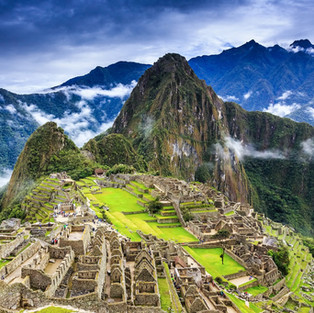























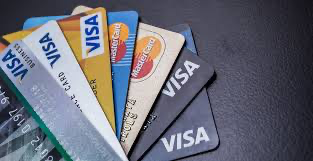
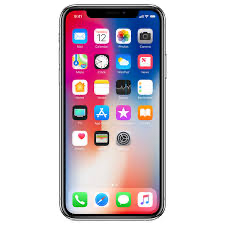

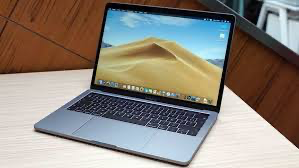
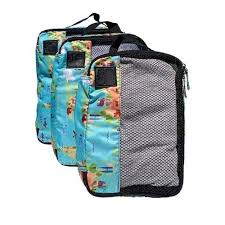



Comentários